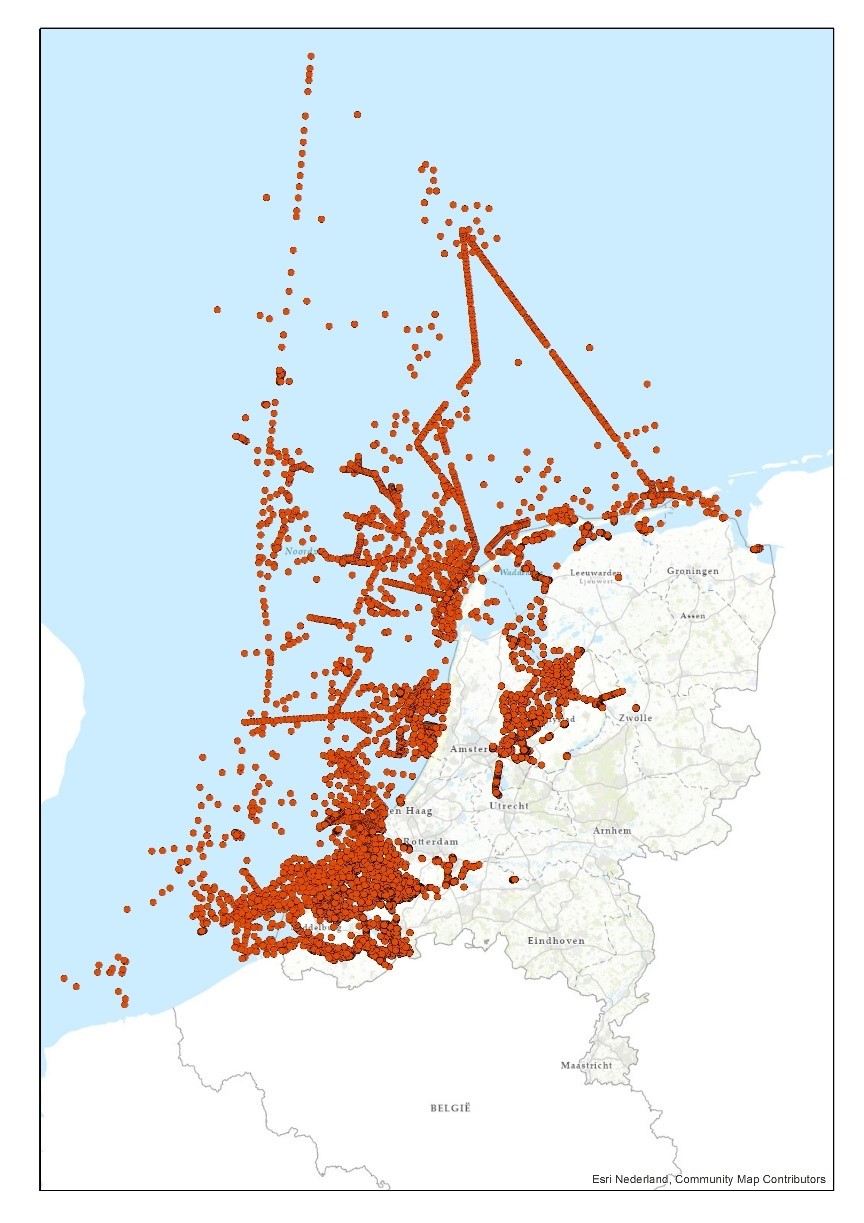Among the data you can request at DINOloket are grain-size distributions in borehole research. In recent months this has been expanded with more than 37,500 distributions.
 Locations of the 37,500 grain-size distributions that have been added.
Locations of the 37,500 grain-size distributions that have been added.
Geological Survey of the Netherlands, part of TNO, has added over 37,500 borehole surveys with grain-size distributions (or grain-size analysis) belonging to approximately 7,150 different borehole surveys. It concerns more than 31,500 analyses belonging to 4,100 onshore surveys and almost 6,000 analyses belonging to 3,050 offshore surveys. The grain-size distributions originate from various archives with data from 1934 up to and including 2005.
Applications of grain-size distributions
The grain-size distributions are used, among other things, for the subsurface models of the Geological Survey of the Netherlands. They provide information about the type of soil under our feet and its properties. The more data points, the better and more accurately we can explain and predict how the groundwater behaves, where and how WKO installations are possible, where sand extraction can best take place, and also where the highest risk of dike subsidence is located.
Relationship with the Subsoil Base Register
The set of information in question is not part of the Dutch Key Register of the Subsurface (in Dutch: Basisregistratie Ondergrond or BRO), at present, grain-sizes from archives are not included in the BRO. This is because in the past the methods used to determine the analyses were not properly agreed upon and laid down in procedures. For this reason, yet no agreements have been made within the BRO for archive data. In geotechnical and geological research, however, grain-sizes are part of the BRO for new borehole research.
Read more about this in the explanation of grain-size distribution.
Please contact us if you have any questions regarding grain-size distribution.